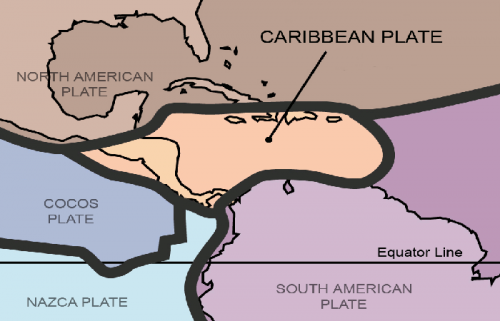Professor offers insight to recent Caribbean earthquakes

(Phys.org) —A 6.4-magnitude earthquake shook Puerto Rico Mon., Jan. 13. It caused some power outages and cracked floors, but no major damage or injuries were reported.
The quake, which struck the northern coastal town of Hatillo, is one of the largest to hit the U.S. territory in recent years. At least 70 aftershocks have been reported since then, with at least three of a magnitude 3.5 or greater.
This event comes four days after a 5.0-magnitude earthquake rattled Havana, Cuba. There were no reports of injuries or damage, but tremors were felt in the island and parts of southwest Florida. The quake, centered about 112 miles east of Havana, happened about 300 miles from a major fault line between southern Cuba and Hispaniola.
"I wasn't really surprised about the earthquake in Puerto Rico, they are very common there, said Grenville Draper, professor of geosciences in the Department of Earth and Environment. "The earthquake in Cuba, however, was very surprising to me as a scientist."
According to Draper, the earthquake in Puerto Rico occurred on the North American-Caribbean plate boundary, whereas the earthquake in Cuba happened well inside the North American plate. Although inter-plate earthquakes do occur, often on older faults that arereactivated, they are less common than those that form at plate boundaries.
"There is no relationship between these two earthquakes. It's just a coincidence they happened within a short time-frame of each other," Draper said.
An earthquake is the result of a sudden release of energy in the Earth's crust that creates seismic waves. They are caused mostly by the rupture of geological faults, or fractures in a volume of rock, and by other events including volcanic activity, landslides, land mines and nuclear activity. Earthquakes can result in ground rupture and shaking, landslides, avalanches, soil liquefaction, fires, floods and tsunamis.
"There's certainly the possibility of a tsunami-generating earthquake occurring in the northern Caribbean. However, such an event would pose a greater danger to the people of the Caribbean and not to us in South Florida," Draper said. "Tsunamis travel best in deep-water. There are a lot of islands and shallow water between us and the northern Caribbean. Those would dissipate the energy of the tsunami."
According to Draper, earthquakes cannot be predicted but they can be forecasted. During an earthquake, individuals should stand inside a doorframe or underneath a desk or solid piece of furniture to minimize the risk of injury resulting from falling objects. If you are near high-rise buildings and crowded streets, it best to remain indoors to avoid injury from falling plate-glass. If you find yourself in an area with low-buildings and an open square, the safest option is to run outside.
Provided by Florida International University















